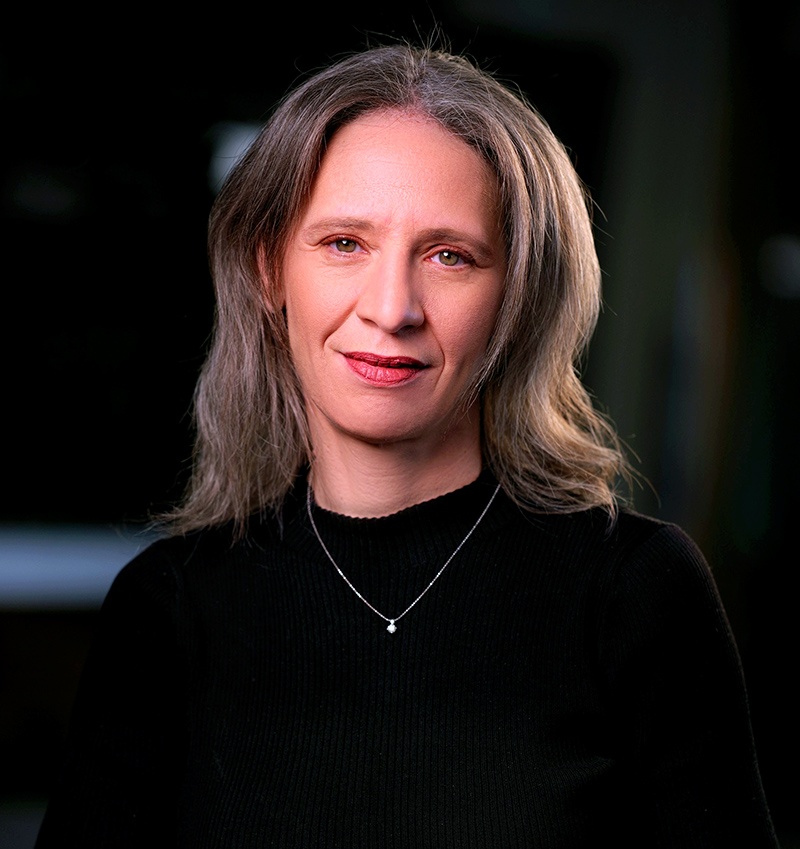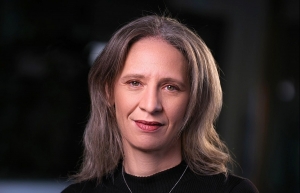GE transformation journey
A monumental announcement
In November 2021, GE made a surprising announcement that it would be divided into three distinct companies, each centring on aviation, healthcare, and energy, respectively. This decision was especially significant given GE's long-standing history in the corporate world.
 |
| Rania Rostom, head of GE's Global Communications and Marketing |
Rania Rostom, head of GE's Global Communications and Marketing, said of the strategic decision, "Essentially, with the iconic 130-year-old GE, the way forward for us is with three industry-leading, investment-grade, standalone public companies, completely independent of one another. And we are starting to embark on that path."
In a March 2023 news release, Larry Culp, chairman and CEO of GE, and CEO of GE Aerospace, expressed optimism about the company's trajectory. He stated, "The future at GE looks promising."
“We are operating from a stronger foundation and as a fundamentally simple business that is creating significant value today and into the future,” he added.
As the spinoff journey progressed, GE knew that each entity needed its distinct identity. It was imperative to choose new names that would capture the essence of their respective industries.
Rostom highlighted this pivotal moment by saying, "In July 2022, we decided that our three different companies will be called GE HealthCare, GE Vernova (a new name for the energy businesses), and GE Aerospace."
GE HealthCare, with an impressive revenue of $18.3 billion in 2022, made its debut as an independent publicly traded company in January 2023, with its stock now available on Nasdaq under the ticker symbol GEHC.
On the other hand, GE Vernova is set to consolidate GE's diversified energy portfolio. This new arm will encompass various sectors, from gas, steam, and wind power generation to power grid technology, nuclear energy, and energy consulting. The businesses coming under GE Vernova's umbrella generated a combined revenue of $29.2 billion in 2022.
Finally, GE's Aerospace division remains a cornerstone in the aviation world. Catering to both commercial and military needs, it supplies jet engines, turboprop engines, and a range of aviation systems and components. Culp has lauded the aerospace division as an "exceptional franchise," and with good reason, as it boasted revenue of just over $26 billion in 2022.
The introduction of new names was accompanied by a full-fledged rebranding effort, with a new look and feel.
“This will give the market, including our investors, customers, employees, and all our stakeholders around the world, a sense of the direction we are moving forward in,” Rostom elaborated on the significance of this step, as each of the three companies was given a distinct mission statement that encapsulates their core goals.
For GE Healthcare, the goal was to create a world where healthcare has no limits. With GE Vernova, it is the energy to change the world. For GE Aerospace, it is all about the future of flight, transporting people safely and bringing them back home.
“As for our employees, people then understand what this transition could mean for them, and how they could further the mission within their respective companies. It was a very exciting time for us,” Rostom shared with VIR.
 |
| GE transformation journey |
Maintaining the GE legacy
One of the most challenging aspects of the transformation was how to handle the iconic GE brand.
As Rostom pointed out, "The legacy of GE is not just a corporate identity; it's a testament to more than a century of innovation and innovativeness. The behind-the-scenes journey to get to the answer was fascinating, as the big question on everyone's mind was what will happen to the GE brand."
Even as the three companies transition to independence, they will carry forward elements of GE's legacy. Research and development (R&D) and technological innovation that has been honed over the years will continue to shape the future of each entity.
“We went on a very robust research exercise to understand the sentiment and perspectives of our investors, customers, stakeholders, and employees,” Rostom said.
“My team around the world took the global framework and made sure that we penetrate the message deep into each local market. They helped explain it and reiterate that the three companies will have the same commitment, focus on localisation, and sense of pride for the employees working in each country.”
With decades of experience working with a wide array of customers, both in the private and public sectors, GE has garnered trust and respect around the globe.
Rostom emphasised the significance of this trust by stating, "We have a strong and respected track record around the world, which is built on trust. This is why when customers were interviewed during the research about the GE brand names, there was a strong consensus on keeping the name because it embodies innovation."
A bright future
GE's decision to split into three independent companies is rooted in the pursuit of focus.
Rostom stated, "Let me go back to why we're doing this. We believe a more industry-focused approach allows for more focused capital allocation and R&D, greater speed in decision-making, operational improvements, and at the end of the day, more value from a market and customer perspective."
The transformative journey also signifies a renewed sense of purpose. Rostom underlined the significance of this, "This transformation gives us the focus that will drive growth going forward, increases value for government stakeholders and customers, brings improvements in terms of operational agility and flexibility, increases competitiveness, and allows us to deliver next-generation products and services."
In the midst of all the structural and operational planning shifts, GE's approach exemplifies meticulous and strategic communication.
As the transition unfolds, GE's legacy of innovation and trust continues to guide the way. As each of the three companies embarks on a journey to shape the future of healthcare, energy, and aerospace, they will all carry forward the spirit of GE's storied history.
By implementing a thoughtful and detailed communication plan, GE is poised to navigate the complexities of its transformation, embracing a future where innovation and specialisation take centre stage.
In this era of change, GE's methodical approach serves as a beacon for successful corporate transformations. With strategic communication at its core, GE is ready to embrace a future filled with innovation and specialisation, guided by the lessons from its past.
“The exciting news is that we are going to have three GEs in Vietnam. GE HealthCare is already an active and independent company, and in early 2024, we will have GE Aerospace and GE Vernova,” Rostom said.
“From a market perspective, we will build on that history of investment and manufacturing. From a brand point of view, it is the legacy of innovation that will continue to be driven. In short, with focus, we see increased growth and value for our stakeholders and customers in Vietnam and around the world,” concluded Rostom.
 | GE spinoff's goal to resonate at a local level Last year, General Electric underwent a significant transformation by splitting into three separate companies: GE HealthCare, GE Vernova, and GE Aerospace. As the spinoff unfolds in the Vietnam market, Rania Rostom, head of GE's Global Communications and Marketing, talked to VIR’s Linh Le about the profound implications and shared insights on the company’s strategies during this pivotal phase. |
What the stars mean:
★ Poor ★ ★ Promising ★★★ Good ★★★★ Very good ★★★★★ Exceptional
Related Contents
Latest News
More News
- GE spinoff's goal to resonate at a local level (October 06, 2023 | 15:24)
- GE's 2022 Sustainability Report indicative of transformative era of action (July 07, 2023 | 12:46)
- Empowering Vietnam's energy transition (May 25, 2023 | 18:05)
- Vietnam installs latest AI-based MRI system (April 21, 2023 | 17:06)
- GE's aeroderivative gas turbines come online in Taiwan (March 29, 2023 | 18:07)
- Addressing Vietnam's energy challenges with aeroderivative gas turbines (February 28, 2023 | 09:33)
- How to sprint ahead in 2023’s worldwide energy priorities (February 08, 2023 | 13:55)
- Boosting Vietnam's grid stability through gas turbine technology (November 22, 2022 | 20:02)
- Healthcare trio collaborates to provide thousands of free breast scans (October 27, 2022 | 17:19)
- GE Healthcare's vision for AI-backed radiology (September 29, 2022 | 11:53)

 Tag:
Tag:















 Mobile Version
Mobile Version